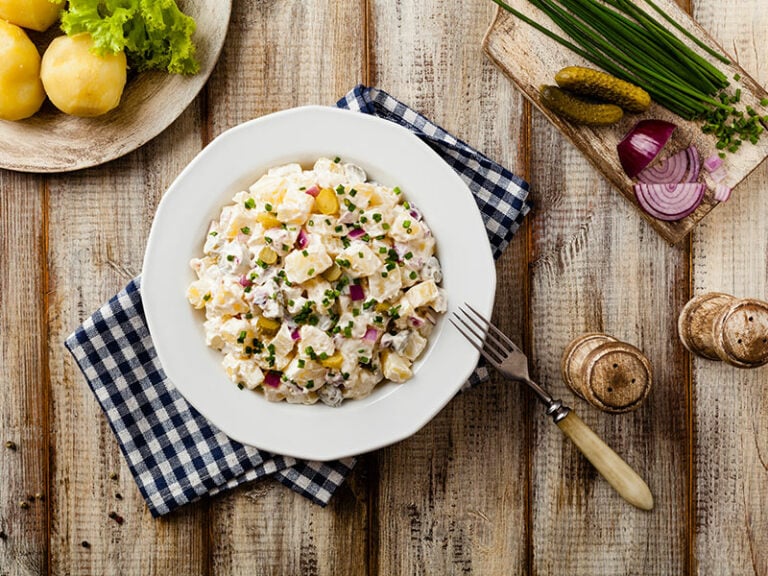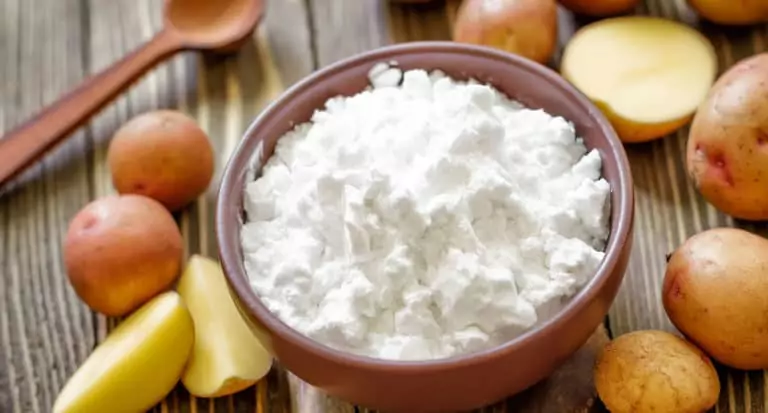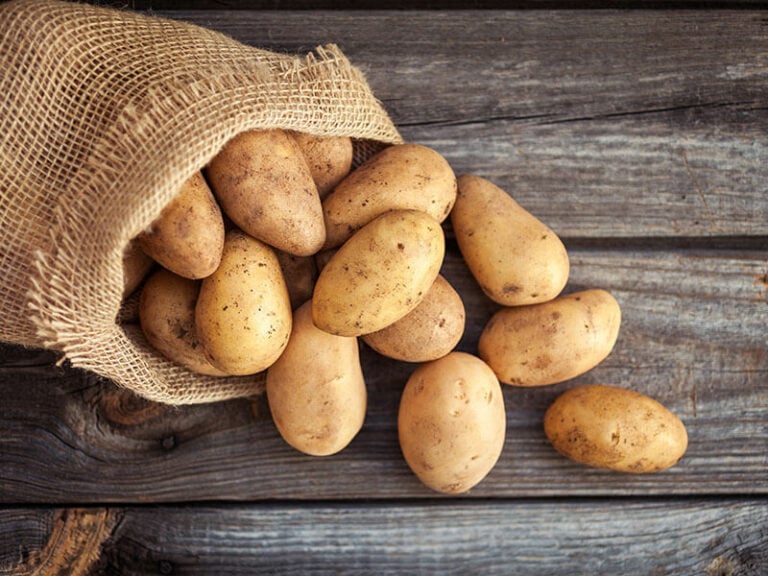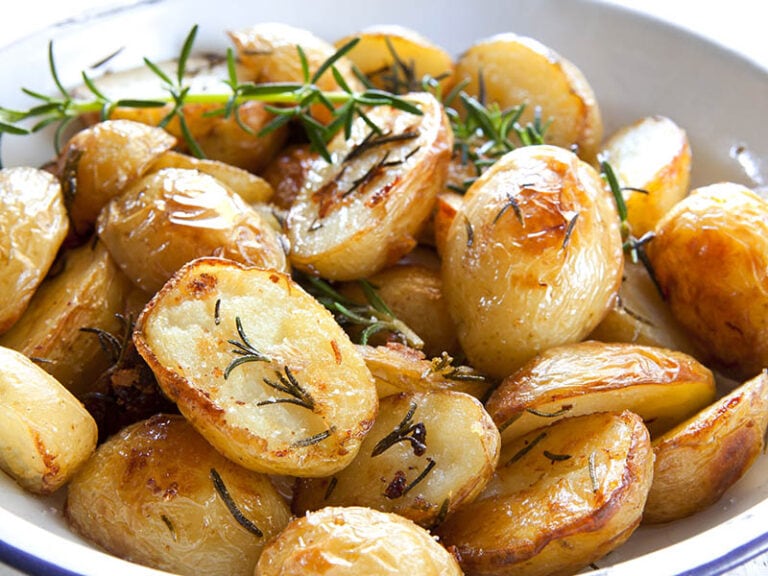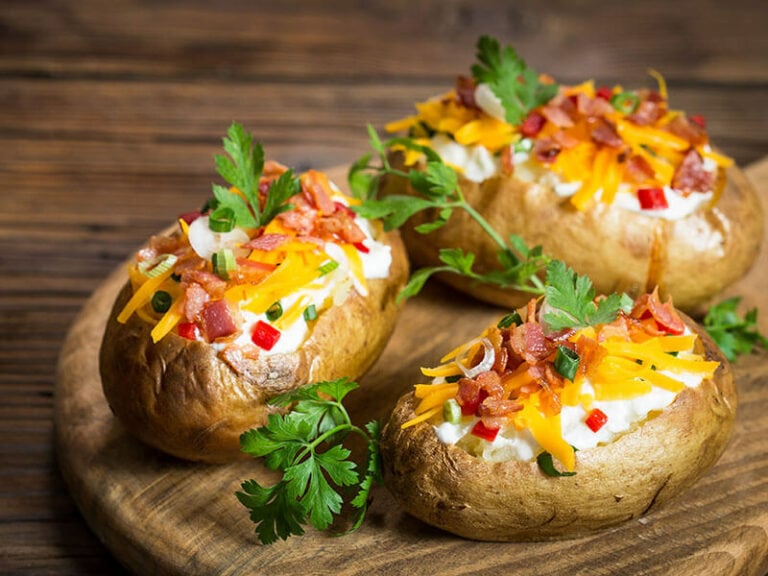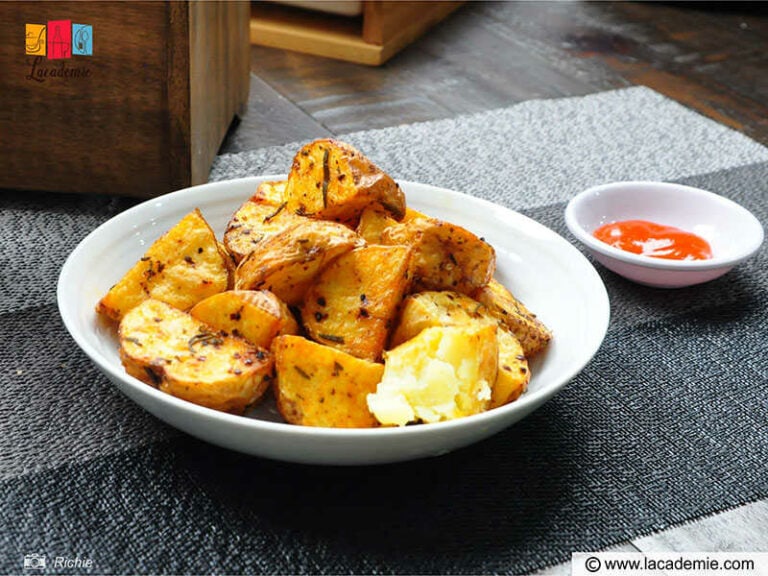Have you ever wondered if you can eat soft potatoes? Dealing with soft potatoes will never be your concern anymore after you read this.
Suppose you go to a supermarket to make dinner with delicious roasted beef and creamy mashed potatoes. After getting home, you find out some of your potatoes have become soft. What are you going to do then? Throw them away?
Fortunately, I’m here to help you! This post comprises everything you need to know about potatoes and how to deal with soft ones. Now let’s get straight into the business!
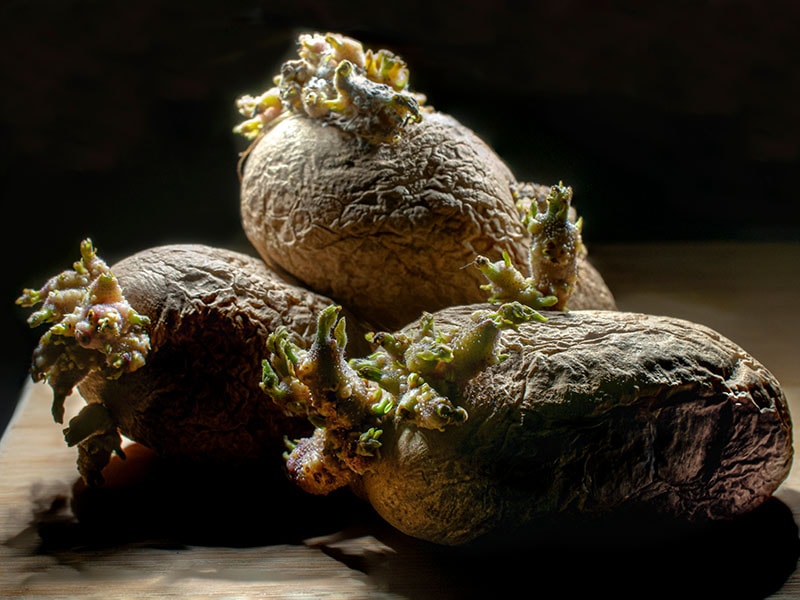
Soft Potatoes Are Edible Depending On How Soft They Are
Many people often assume soft potatoes are signs of potatoes getting spoiled. Surprisingly, they are edible, but only to a certain extent. The problem is, how to know if your soft potatoes can still be served on the table?
So here are things you should remember. You will need to use your eyes to look, your nose to smell, and your hand to touch.
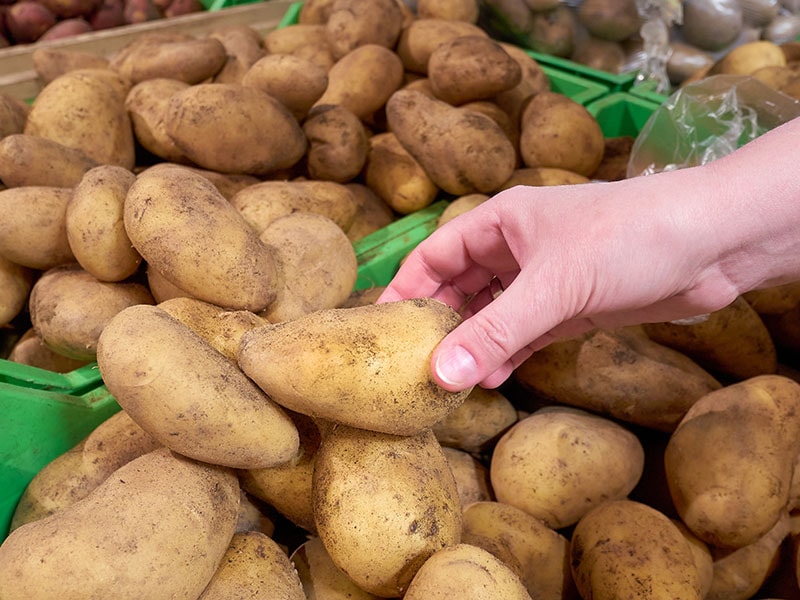
Slightly Soft Potatoes Are Safe To Eat
A potato is considered safe to eat when it is not overly soft to the touch, does not have a weird smell, and shows no difference from the fresh one on the outside.
On average, a potato is made up of 80% water.(1) So naturally, it will dry out. You can cut out the soft parts and cook them as usual. Although being soft does not change the fact that your spuds are safe to eat, it does change the flavor as they have lost the starchy taste.
However, if your potatoes have become really soft or mushy and can not hold their shape when you squeeze them, you must discard them.
There are 3 things you should do when you find your spuds no longer in fresh condition:
- Determine whether they are edible or not
- Handle them according to their conditions
- Check the rest, and store them properly to minimize the chance of recurring
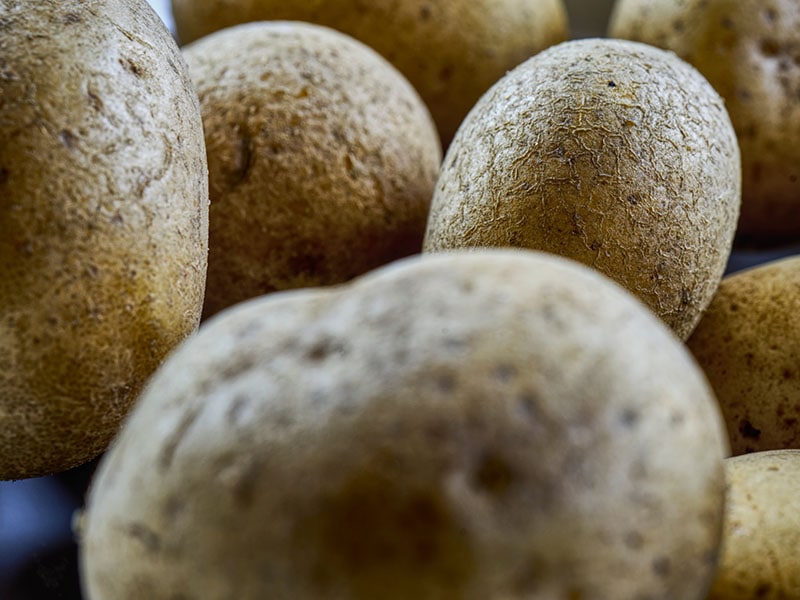
Signs That Tell Your Potatoes Are getting Bad, And How To Handle Them
If your potatoes show some signs of severe mold, big green spots, or large sprouts, you should not eat them. As they may possess dangerous risks to your health.
Mold
A simple rule to deal with most food in general: If things have mold, it is better to say goodbye to them!
Mold in potatoes appears in the form of fuzz, spots that are white, red, black, brown, or bluish-gray on the skin.
The presence of mold means that there is no edible part. You may think peeling their skin or removing colored spots will easily solve your problem, but unfortunately, there are some mold spores that your eyes can not detect.
So next time when you find your potatoes surrounded by mold, do not hesitate to throw them away.
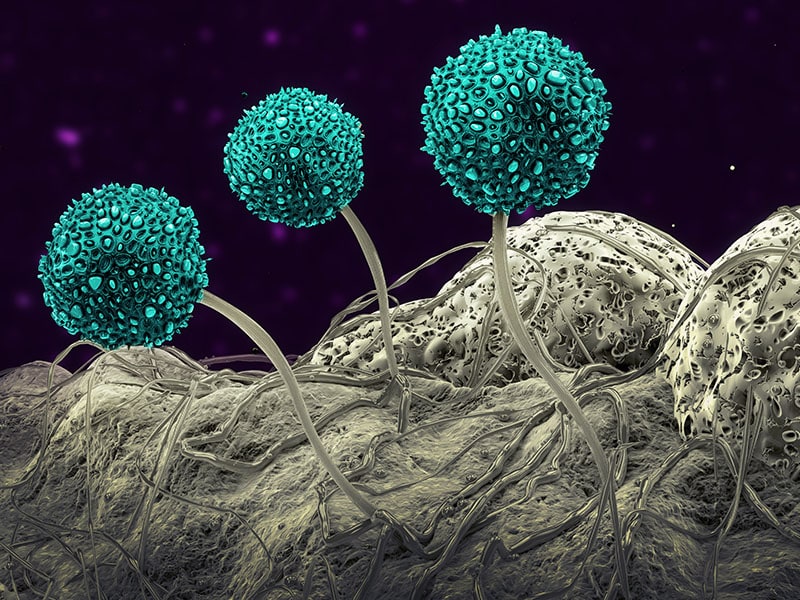
Green
Greening happens when potatoes are exposed to direct sunlight. The green color comes from a compound called chlorophyll. It appears in almost every plant and is harmless itself.
Being exposed to sunlight will make your potatoes produce more chlorophyll. In that process, another compound is also formed. This is the toxin called solanine. Taking a great amount of this into your stomach, you are likely to cope with serious health problems.
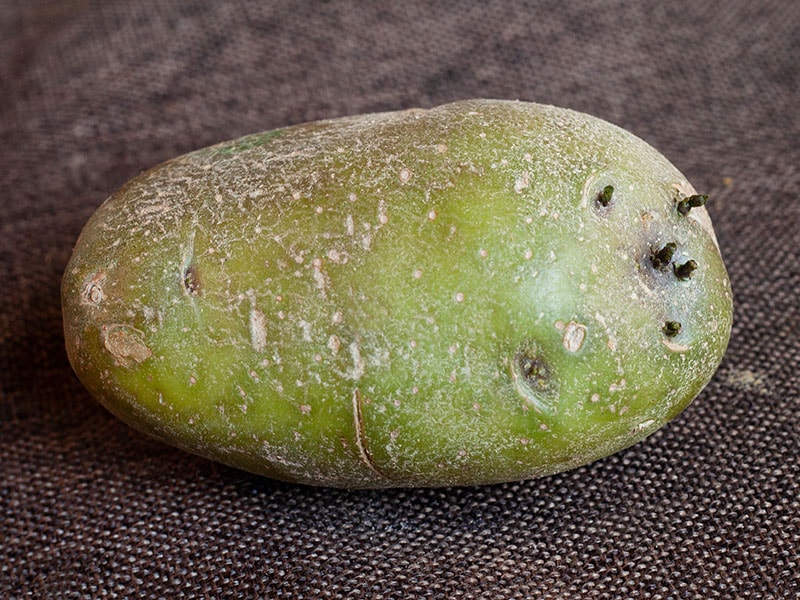
But that does not mean you have to toss them all away. There is a way to handle them, and I will tell you right away.
If your potatoes just have some small green spots, simply remove them with a knife and use the rest. However, it is advisable to peel the potatoes because they may contain more solanine inside their skins.
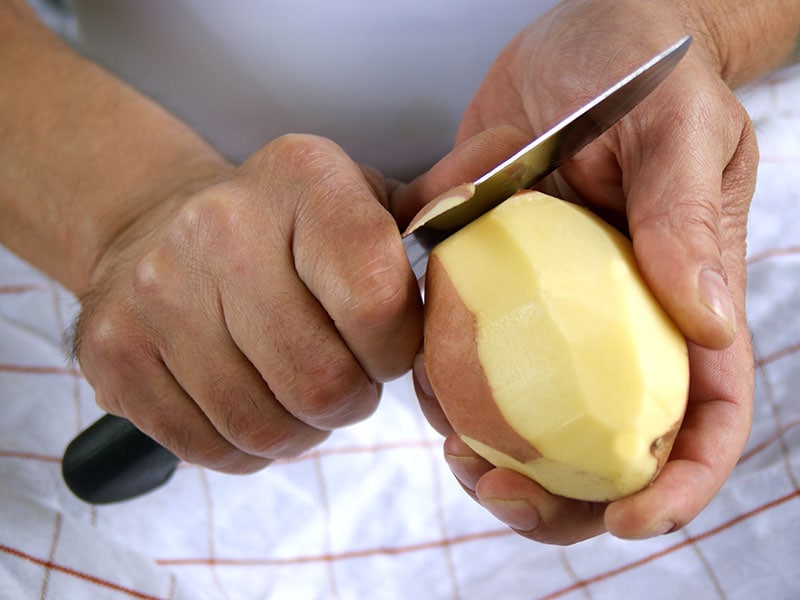
Cooking methods such as steaming or cooking in water can also remove a significant amount of the solanine content inside your potatoes.
Nevertheless, if your spuds are too green (more green than white or yellow on the skins and fleshes), or taste bitter even after you cook them, then it is best not to eat them.
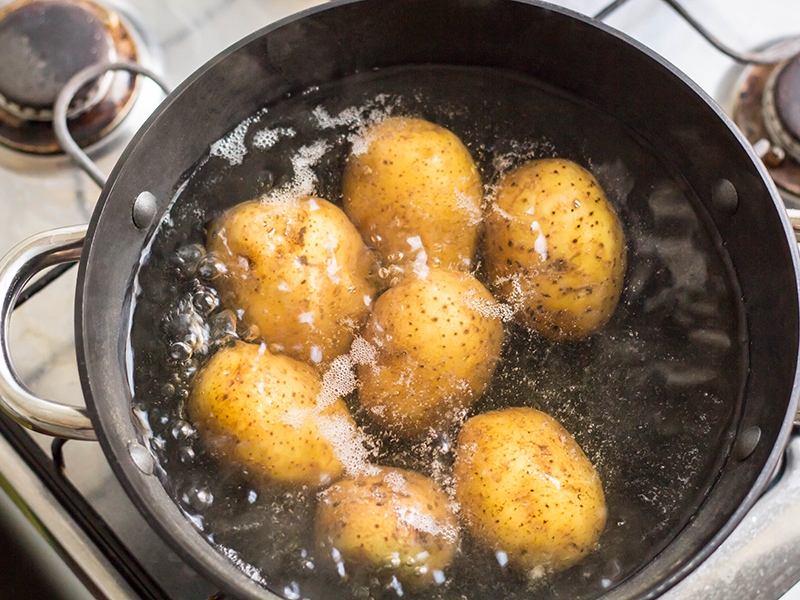
Sprouted
Some plants do not need to be under the soil to grow. Potatoes can bud from the tubers when stored in a dark, moist, and warm place resembling dirt.
Sprouted potatoes contain solanine like green ones, so how you handle them is similar. Solanine is mostly located inside the sprouts, so all the unsightly sprouts must be removed.
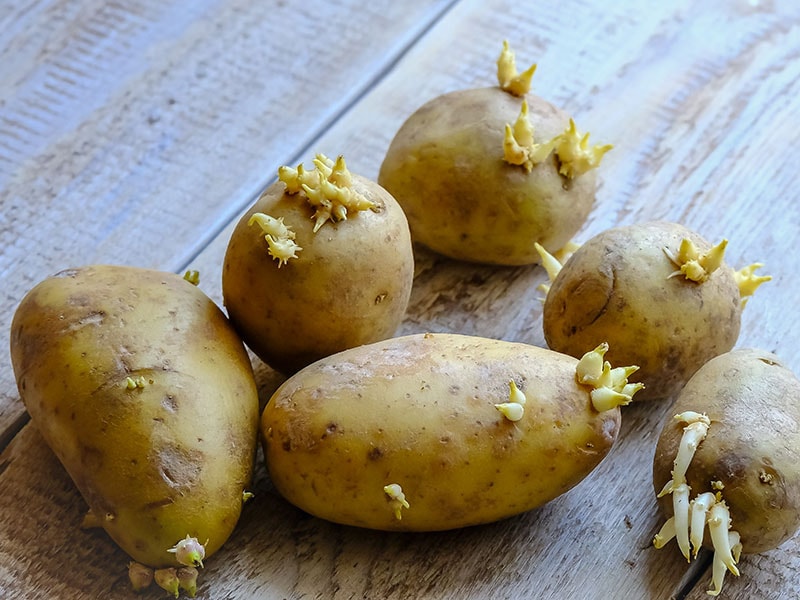
You can use your hand to snap them off and then use a small paring knife to dig out the root. Just make sure to get all the eyes and the base of them out. The sprouted areas might also be green, so you must cut those pieces and peel the potatoes.
After carving, you rinse them carefully under running water to cleanse them, and your potatoes are ready to be cooked.
But here is a thing you should keep in mind. As the sprouts grow bigger, it is when solanine content begins to rise. If the sprouts are longer than a few inches, you had better take them to your garden to plant.
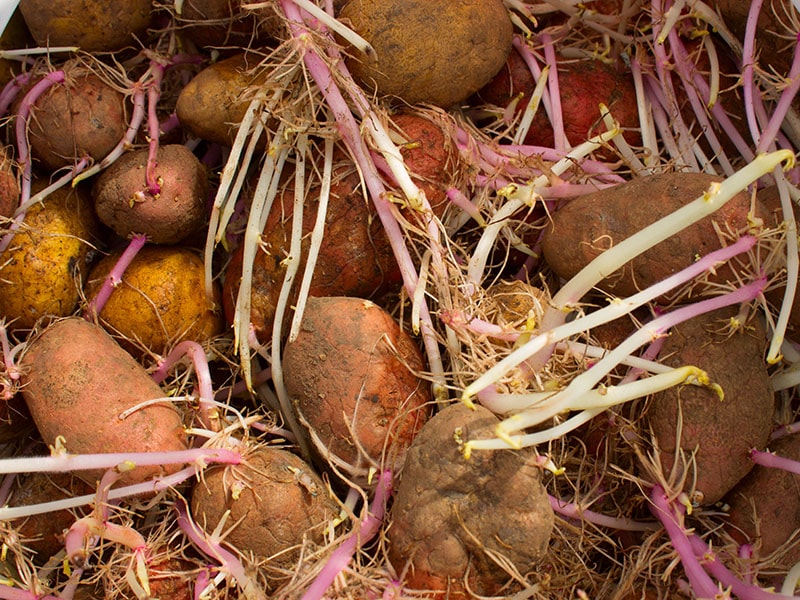
Odor
Other than optical signs, the smell of potatoes can also indicate whether they have spoiled. In this case, your nose will be a good aid.
Rotten potatoes smell like … rot, of course. You may recognize right away the distinct foul smell. While fresh potatoes give off an earthy and starchy scent, bad potatoes have a stuffy and moldy odor. And that is when you know, you should not eat them.
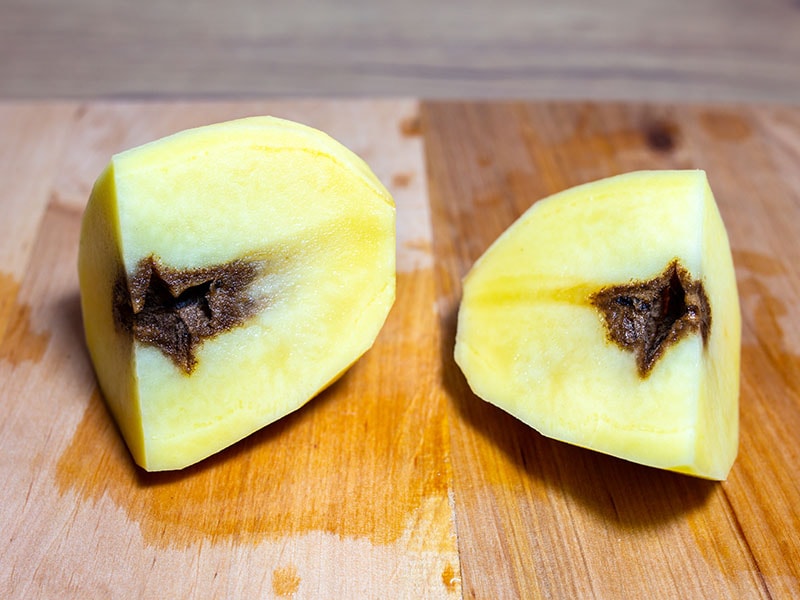
Potential Risk When Eating Bad Potatoes?
If you ignore the signs of your spuds getting spoiled and continue eating them, there is a high chance that you might experience food poisoning.
Bad potatoes contain toxins, which may lead to solanine poisoning or mold poisoning. The most common symptoms are:
- Dizziness
- Fever
- Stomach cramps
- Muscle aches
- Nausea
- Vomiting
- Diarrhea
Mild food poisoning may last a few hours. But in a worse scenario, you need to be hospitalized early to prevent long-term effects on your body.
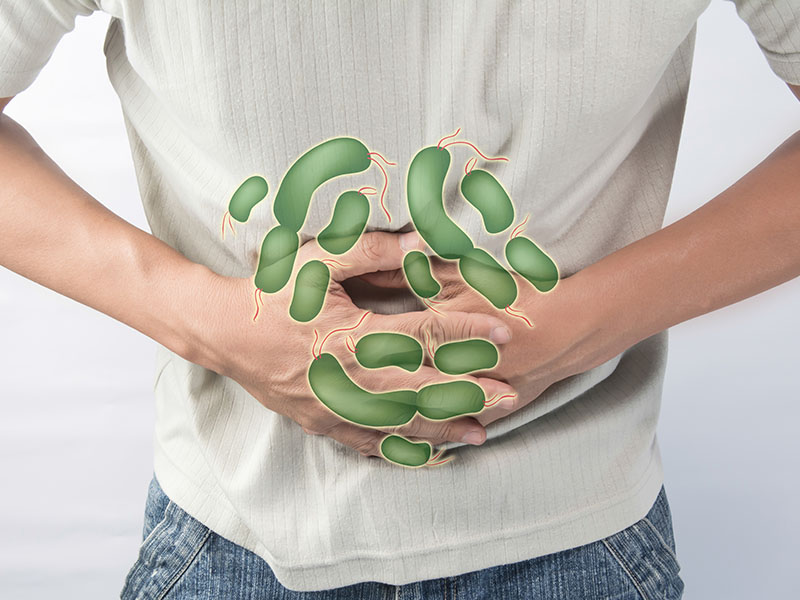
How Long Can Potatoes Last?
Many factors can affect the shelf life of potatoes, including preparation methods, potato types, temperature, and humidity.
Generally, potatoes can last for a few weeks, or up to a few months. Depending on the place you store them, the shelf life can vary.
The table below provides a piece of brief information about the connection between the shelf life of potatoes and the place you store them.
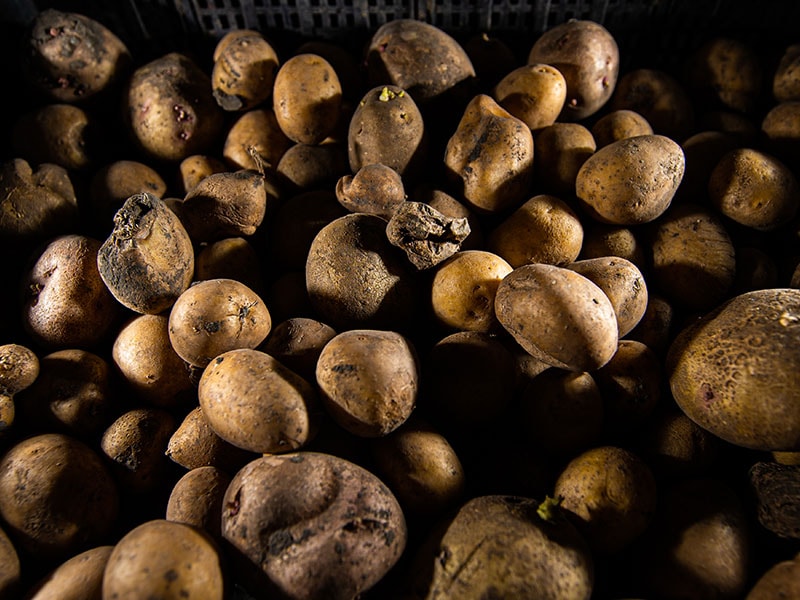
At room temperature, raw potatoes can last for 1-2 weeks, while cooked potatoes can not survive longer than 12 hours. In a normal pantry, potatoes stay fresh for 1-2 months.
Keeping raw potatoes in the fridge may seem a good idea; however, it only helps potatoes stay fresh for 3-4 weeks, not to mention the discoloration and the color change. When cooked, potatoes can last 3-4 days in the fridge.
Even if you can keep your raw potatoes in the freezer for 3 months, you should only freeze cooked ones. As I have said, potatoes comprise approximately 80% water. When frozen, the water turns into ice. After you take them out, your spuds will become mushy and grainy.
So what is the best way to extend the shelf life of potatoes? Keep reading this, and you will find out in no time.
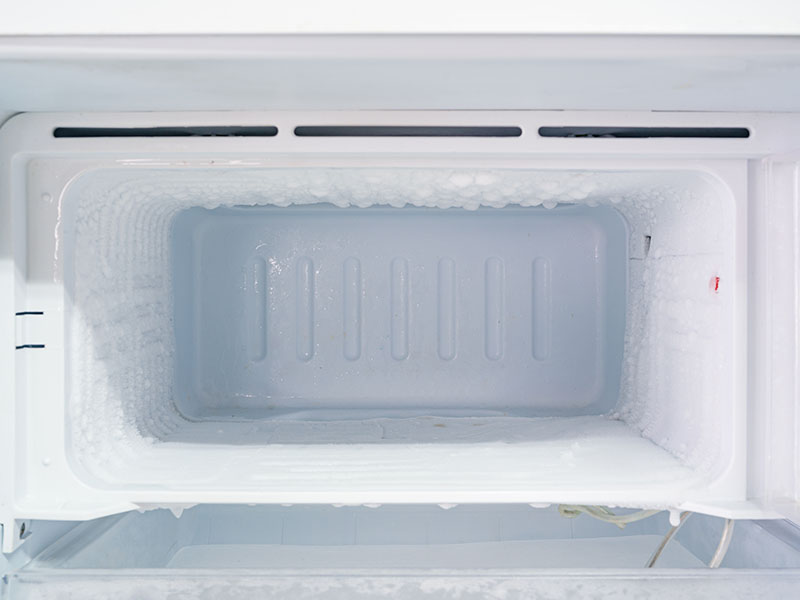
Ways To Keep Potatoes Last Longer
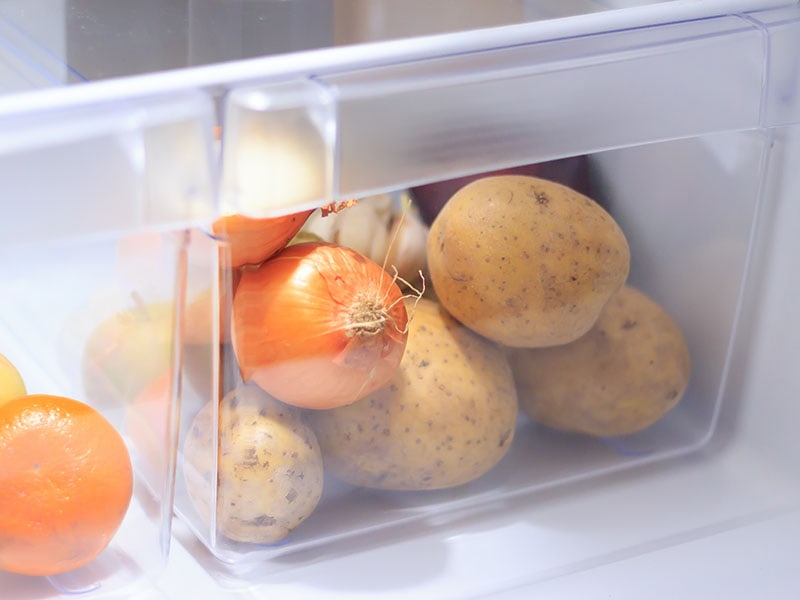
Unlike other vegetables, putting potatoes in the fridge can not extend their shelf life significantly. In cold environments with temperatures lower than 50 degrees, potato starch turns into sugar, leading to a sugary taste and a color change when cooked.
A little tip for you is that you can blanch potatoes for several minutes before putting them into a fridge or a freezer to avoid them getting sweeter and discolored.
From my experience, there are things you should keep in mind to make potatoes last longer. Follow these ways, and you will get surprising results.
Store Potatoes In A Cool, Dark, And Well-Ventilated Space
Your pantry is good but not an ideal place since it is too warm, it will make potatoes sprout. A basement or a garage would be a great choice because it is warmer than a fridge but colder than your kitchen.
But that’s not all. You should store them in containers or cardboard boxes for best results, but don’t close them. You have to keep them well-ventilated. Perforated plastic bags or paper bags are also good options.
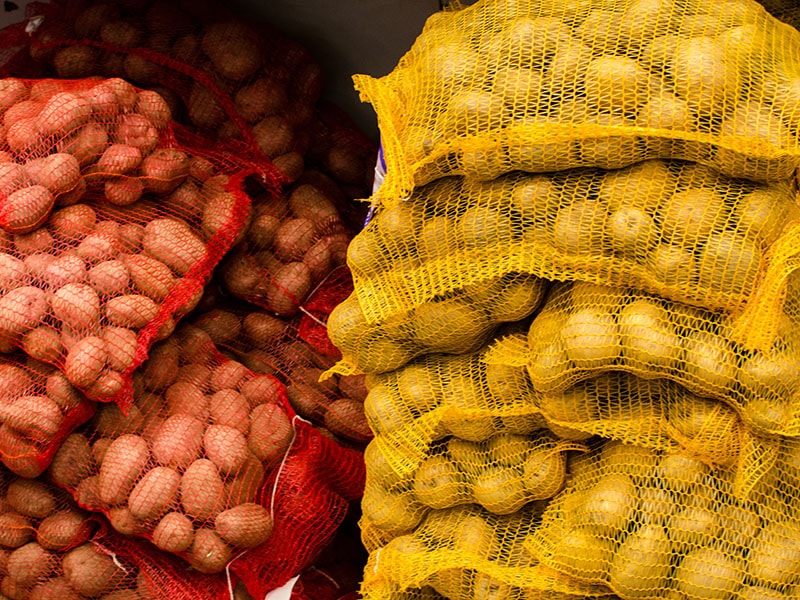
Besides, temperature and humidity are also required. At a temperature of 45 to 55 degrees F (7 to 13 degrees C) and a humidity of 80% to 90%, potatoes will last even longer.
You should also check regularly to ensure none of them get spoiled during the storage process. Spoilage may spread and ruin the remaining potatoes if it is not done in a timely detected.
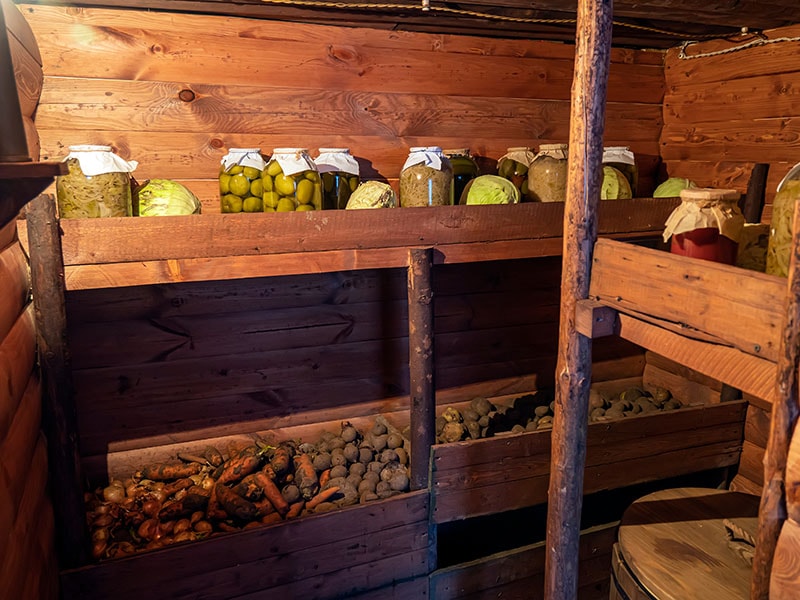
Keep Your Potatoes Away From Lights
Light stimulates the formation of compounds that might be good for potatoes but bad for humans.
Being exposed to direct sunlight (or even kitchen light) causes the potato skins and fleshes to turn green and grow sprouts faster than normal. It means the amount of solanine content also rises, which is definitely undesired.
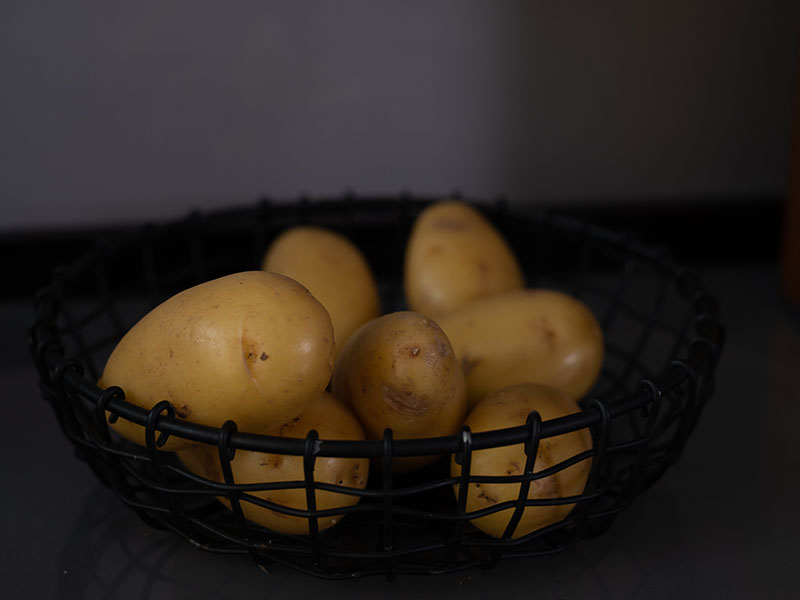
Avoid Warm Temperature Places
Storing potatoes at low temperatures increases their shelf time (up to 4 times compared to those stored at room temperature) and prevents the loss of Vitamin C content (potatoes stored at warm places lose 20% of Vitamin C each month).
Warm places such as areas next to your fridge or oven, on the counter, and under the kitchen sink are not advisable.
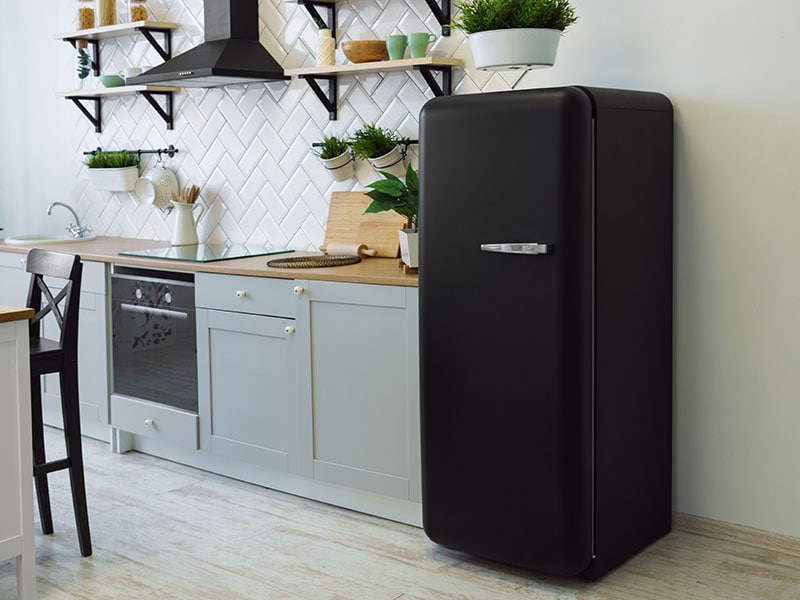
Beware Of Things You Store Near Potatoes
When fruits, especially apples, are ripe, they give off ethylene, making your spuds become soft and grow sprouts earlier.
Onions are also bad companions. The moisture eliminated by potatoes will speed up the spoilage process of onions. So it is best to store them separately.
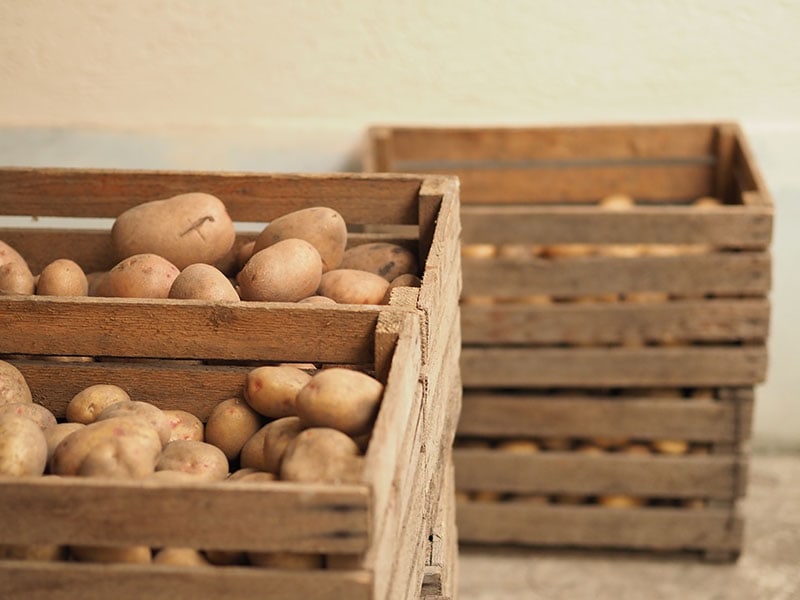
No Need To Wash Your Potatoes Before Storing
The stagnant water on the surface may hasten spoilage due to the growth of fungi and bacteria. To clean them, you just have to wipe the dirt off with your hands or a brush and store them dry. You should only wash your spuds when they are ready to be cooked.
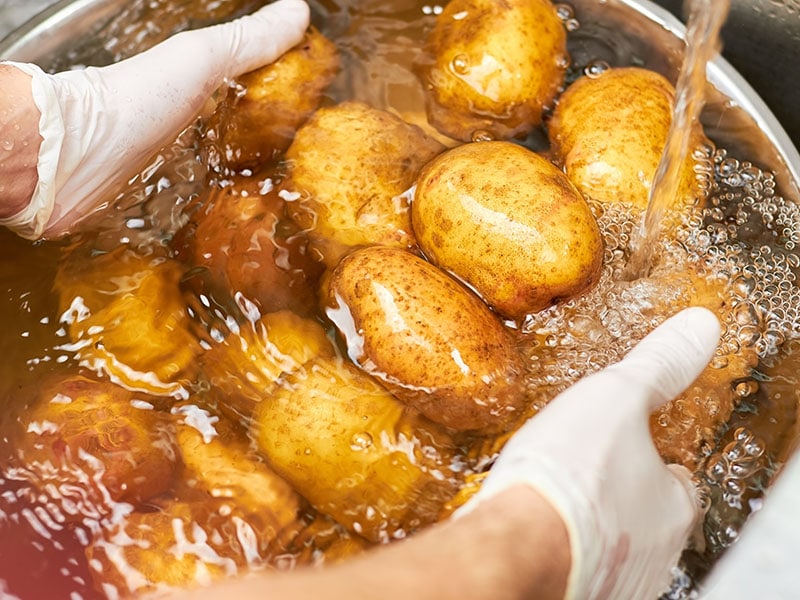
Dishes To Make With Soft Potatoes
I can assure you that potatoes are one of the most versatile vegetables. Whether they are boiled, steamed, baked, roasted, or fried, their flavor will never disappoint you.
Potatoes themselves have a mild flavor. Hence, they can be combined with almost anything you want.
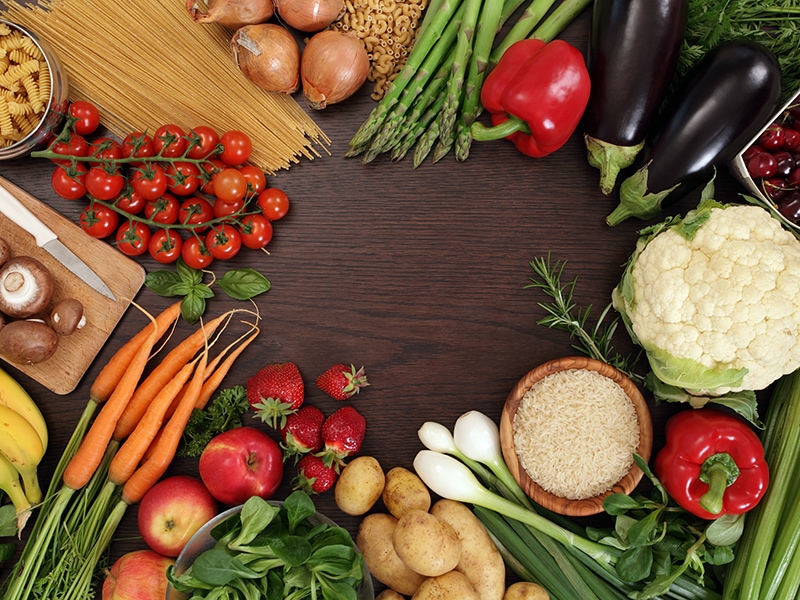
Types Of Potatoes And How To Recognize Them
Every day, tons of potatoes are displayed in supermarkets, waiting to be served on the table. But there are not many people who pay attention to their types.
Overall, there are 7 types of potatoes. And you can easily tell which type your potatoes belong to just by their skin and flesh colors. The table below will give you a better overview:
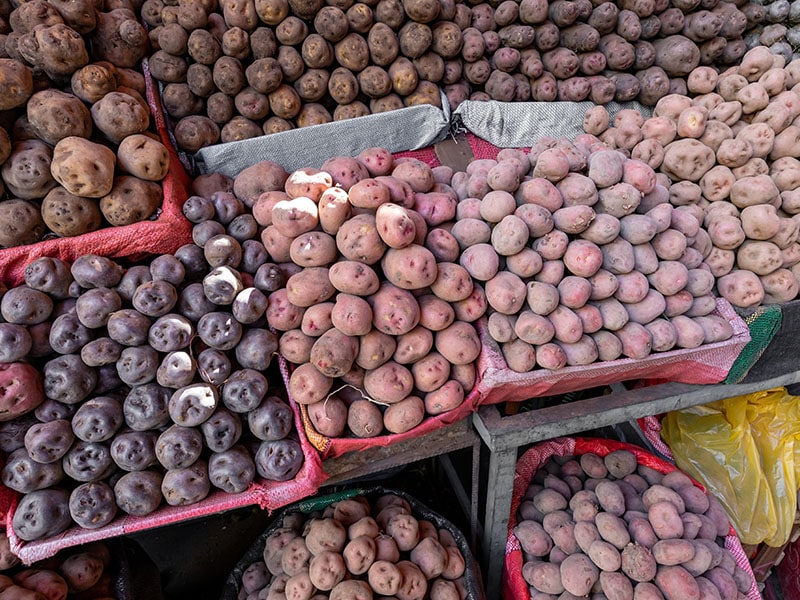
Among the 7 types, Russet potatoes are the most consumed type, and when mentioning potatoes, most people will think of Russet first. In fact, the healthiest potatoes are Red potatoes as they comprise the highest amount of vitamins and minerals.
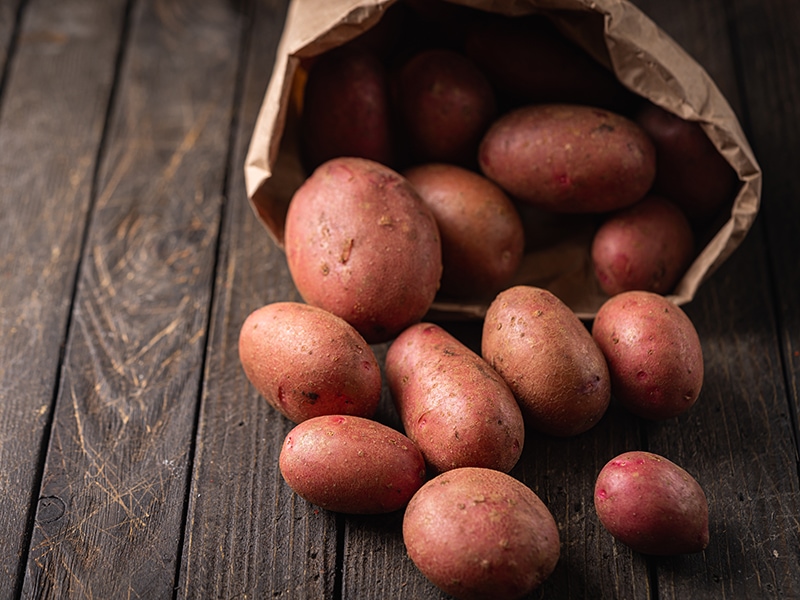
Health Benefits Of Eating Potatoes
Potatoes are used as a staple food in many households all around the world. Not only for their relatively low price but also because they are easy to prepare.
Now, you may consume potatoes because you like the taste of them. But little do you know, potatoes have more to give you than their flavor.
How Nutritious Are Potatoes?
Potatoes are generally beneficial for health; however, it also depends on the ways you cook and how you combine them with other ingredients.
One medium size potato (about the size of your fist) contains only 110 calories. It also provides other important nutrients such as Vitamin C, potassium, fiber, and carbohydrates.(2)
- Potassium: compared to other vegetables, potatoes contain the most potassium per serving.
- Fiber: a medium size potato provides 8% fiber of the daily recommendation.
- Carbohydrates: potatoes have both simple and complex carbohydrates, which are a major source of energy for the function of human bodies.
NOTE: Most of the vitamins and minerals are inside the skin of potatoes. So, peeling fresh potatoes means you will lose a significant amount of nutrients.
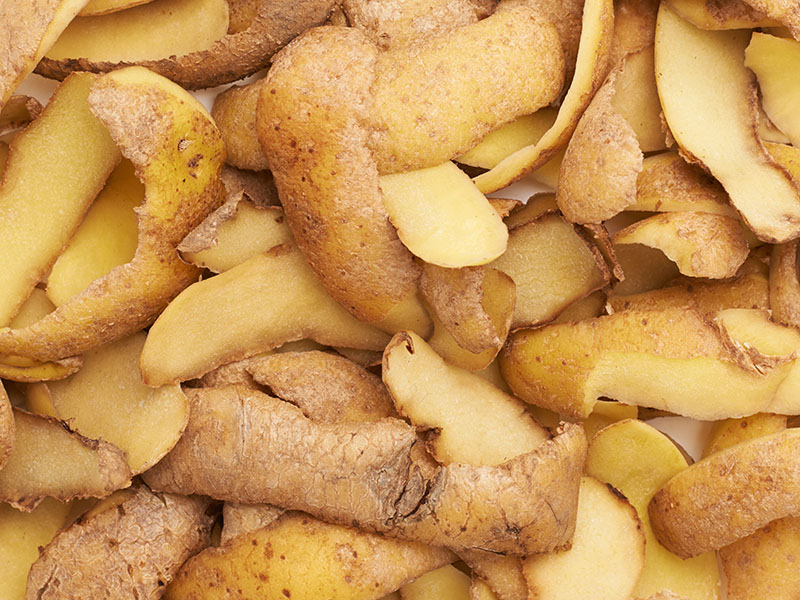
Boost Your Digestive System
Potatoes are rich in fiber. Hence they help the process of digestion become smoother and prevent constipation.
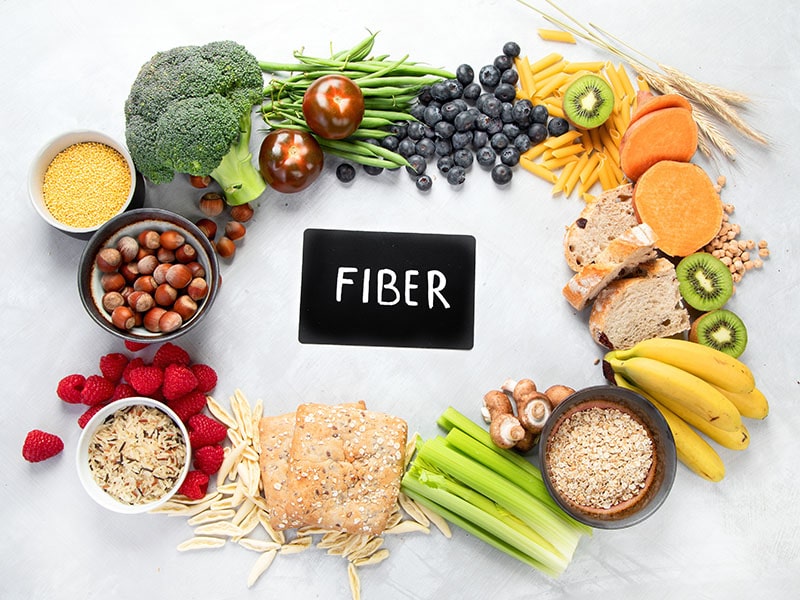
Support Heart Health
The amount of potassium in potatoes can decrease blood pressure. Potassium is one of the most essential substances needed for your heart’s function. Basically, it keeps your heartbeat steady.
Soluble fiber, which can be found in potatoes, also plays an important role in decreasing risks related to heart diseases.
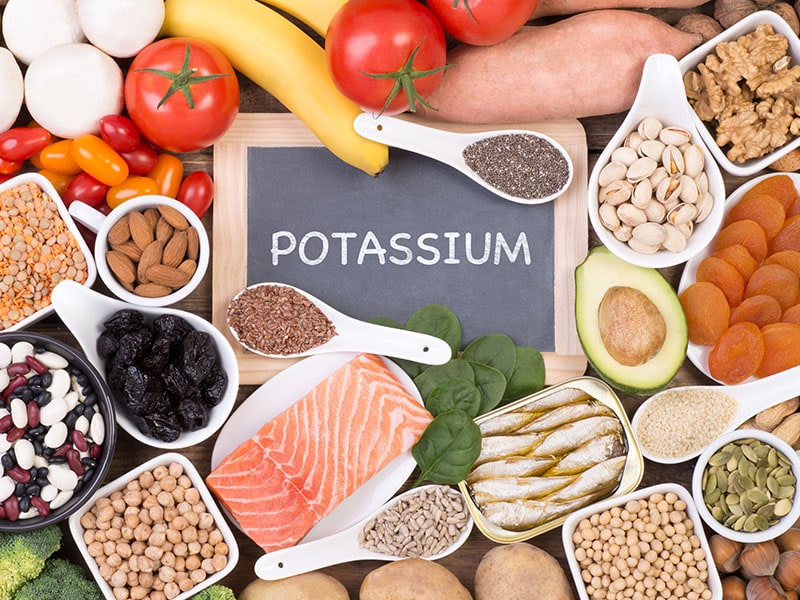
Help You Get A Better Sleep
Potatoes contain an amino acid called Tryptophan, a natural sedative. If you are a light sleeper, a couple of potatoes may help you fall asleep easier. Not literally, though! Of course, you have to cook them first.
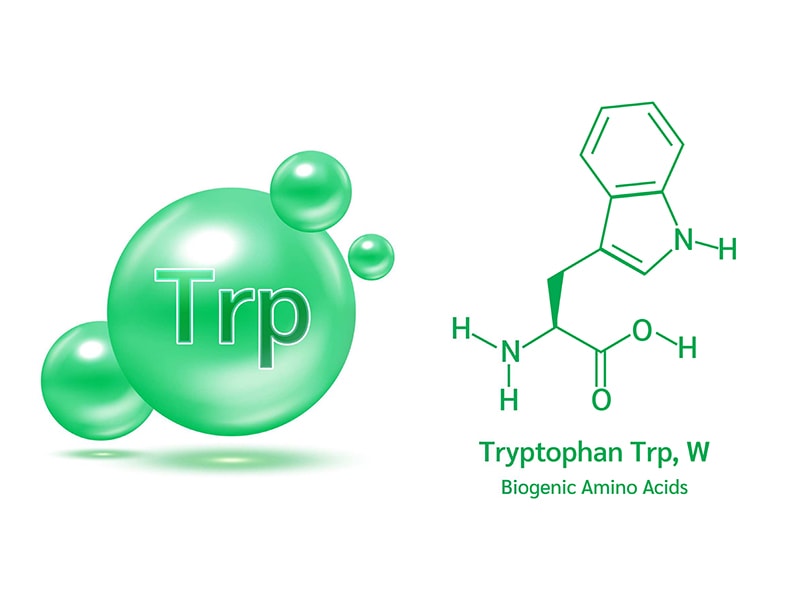
Strengthen Your Bone Structure
Minerals included in potatoes, such as iron, calcium, phosphorus, magnesium, and zinc, can help you build a strong bone structure. Besides, they assist in preventing bone loss for both men and women.
Collagen, which is important for the structure and function of bones, skin, and connective tissue, can also come from the production of iron and zinc inside potatoes.
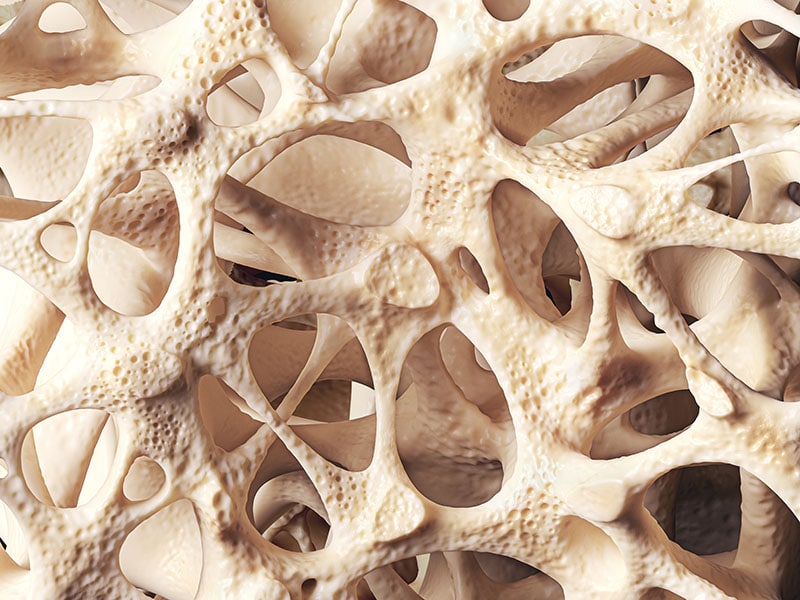
Potato Recipes To Make With Soft Potatoes
Depending on the type of potatoes, you can decide the best way to prepare them. Here are some recommendations; however, because potatoes are very versatile, you can use any type to make any dish you want.
- Baked or roasted: Russet, red, yellow, fingerling, and petite
- Pan-fried: Russet, white and petite
- Mashed: Russet, white, yellow
- Soup and stew: Red
- Grilled: Red, yellow, purple
- Steamed: Red, white, purple
- Salad: Red, white, yellow, purple, fingerling, and petite
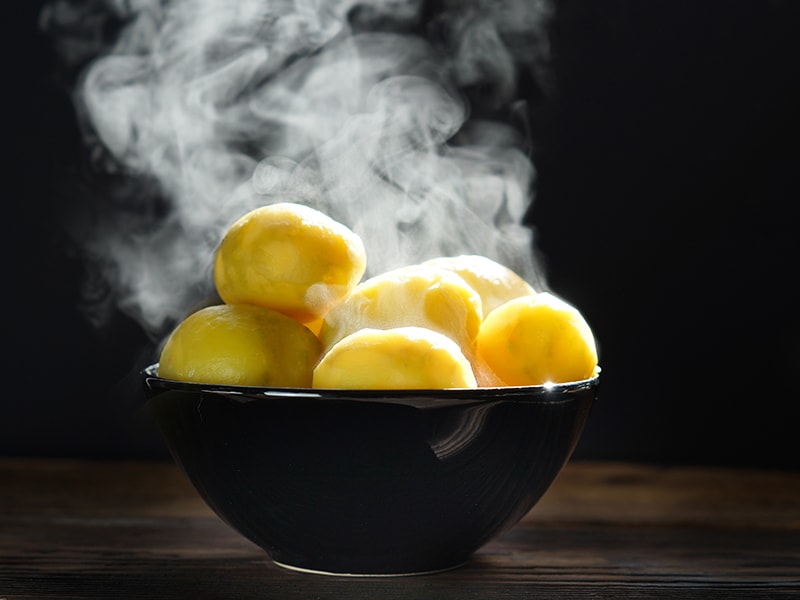
Next, you will be given detailed instructions on making dishes with soft potatoes. And in case you do not know what to cook for dinner, you may also find your best potato recipes right in this post.
Mashed Potatoes
Soft potatoes create a special buttery flavor that will linger in your mouth every time you take a bite. Make sure you know the correct way to thicken mashed potatoes.
With only a few ingredients you can easily find in your house, this dish is a perfect meal on busy evenings.
Mastering your mashed potatoes is no longer a concern with this recipe.
Twice-Baked Potatoes
The name of the dish comes from the way people make it. You have to bake the potatoes, mash the insides and then put them back into the oven.
Using soft potatoes will shorten the process as they have already been soft. In addition, they add a nutty flavor and also make it easier for you to mash. Feel free to add cheese, cream, or bacon if you desire.
Find out now – the easiest recipe to make twice-baked potatoes.
French Fries
French fries are one of the most common menu items at fast food joints. However, you do not have to go to the restaurant because you can make them at home.
Slightly soft potatoes are still qualified to become beautiful, crispy French fries. But to make sure the result turns out to be as good as your expectation, you may want to check out the recipe below.
A secret weapon can make your French fries stay crispy even when they cool down.
Potato Soup
There is nothing better for a chilly night than a bowl of potato soup. It will not take you more than 35 minutes with this incredibly tasty and nutritious meal. And the best thing is, you can easily turn it into a meatless version if you are a vegetarian.
Potato soup for a light meal? Why not?
Who Should Stay Away From Potatoes
As appealing as they may be, potatoes are not for everyone. These are the people who should avoid eating potatoes:
- People who have diabetes as potatoes can increase their blood sugar level
- Women in pregnancy as eating too many potatoes can cause indigestion
- If you have symptoms such as headache or skin irritation after eating potatoes (even when your potatoes are totally fine), you are probably 1 of the people who have an allergy to potatoes. So you had better choose other vegetables to stay safe.
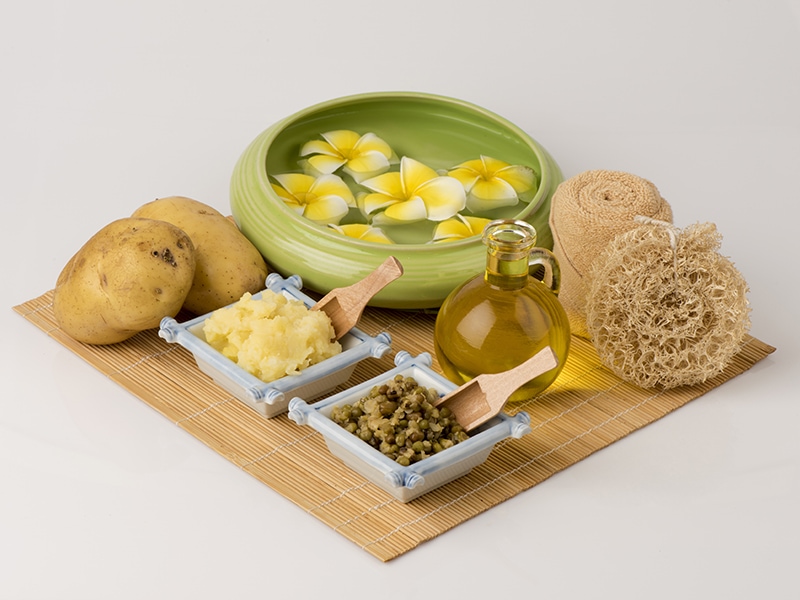
Potato – A Natural, Easy-To-Find Ingredient For Skincare Lovers
Potatoes are not only nutritious but also can be used for beauty purposes. Making face masks from potatoes treats wrinkled skin, provides moisture to the skin, eliminates dark spots, removes dead skin cells, and lightens your skin.
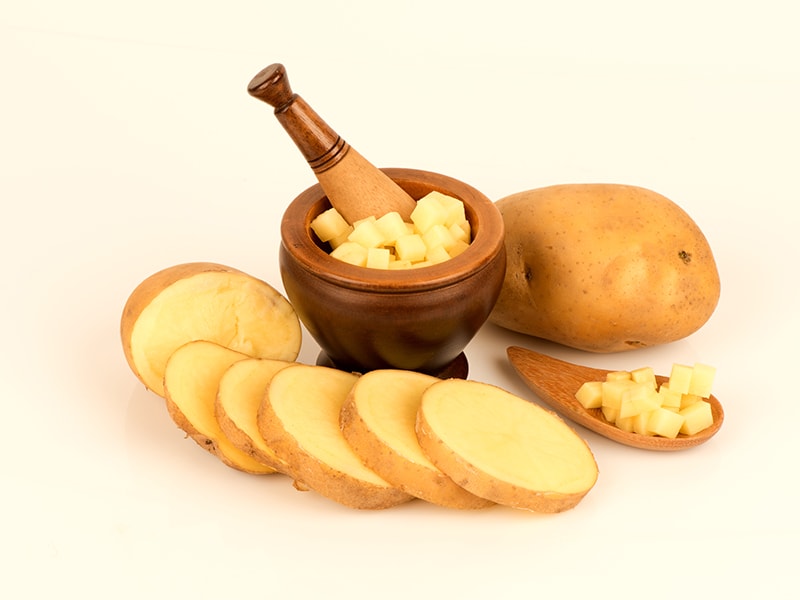
But first, you have to make sure none of the ingredients can cause an allergy to your skin. The misuse may lead to inflammation and other allergic symptoms on the skin.
There are many types of masks you can make from potatoes. According to your skin conditions and your purposes, you can decide which mask suits you best.
If you want a lighter skin tone, use potatoes and eggs. If you want to moisturize your skin, potatoes and milk are a perfect match. And if you want nothing more than getting rid of the annoying pimples, potatoes and honey will solve your problem.
The recipes for the homemade face masks are surprisingly simple. For example, here are the instructions to make a potato and milk face mask:
Step 1: Boil the potato until it gets soft.
Step 2: Mash it smoothly
Step 3: Add 2 teaspoons milk, and stir until it turns to paste
Step 4: Cleanse your face, gently use a towel to wipe
Step 5: Apply on your face for 15-20 minutes
Step 6: Rinse with warm water
The only difference appears in step 3. You can replace 2 teaspoons of milk with an egg or 2 teaspoons of honey to match your skin condition.
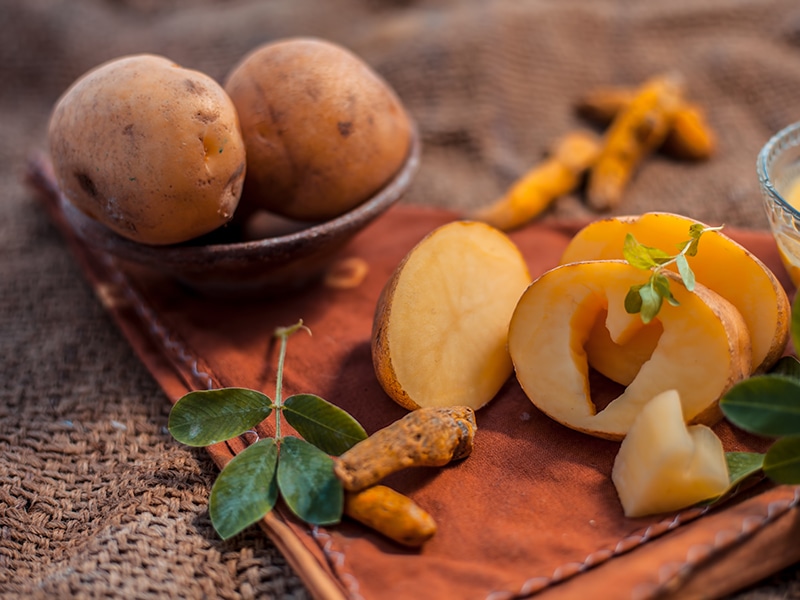
NOTE:
- You should use these face masks before going to bed at night to avoid getting exposed to sunlight or dust.
- You should only apply these masks 2-3 times per week and no more than 20 minutes each. If you have sensitive skin, 1 per week is advisable.
FAQs
You still have some questions and wonder if others have the same queries as you. Here are the head-scratching questions that will provide you with brief information as well as tips for further purposes.
Never Have To Flinch As Now You Know Exactly What To Do With Soft Potatoes
Keeping potatoes fresh for a long time is not an easy task. But do not let that discourage you, as you now know everything about potatoes, including how to determine their conditions, how to tell if it is time to discard bad ones, ways to store them, and even popular potato recipes.
Have you ever had to deal with soft potatoes? If so, share your own experience in the comment section below and let others know your ways.
And finally, do you find this post informative? If you do, do not hesitate to share this with your beloveds immediately, as they might be dealing with the problem right now!
References
- Ncbi.nlm.nih.gov (2018). Starchy Carbohydrates In A Healthy Diet: The Role of the Humble Potato [Online].
- Fruitsandveggies.org (2022). How Healthy Are Potatoes? [Online].

